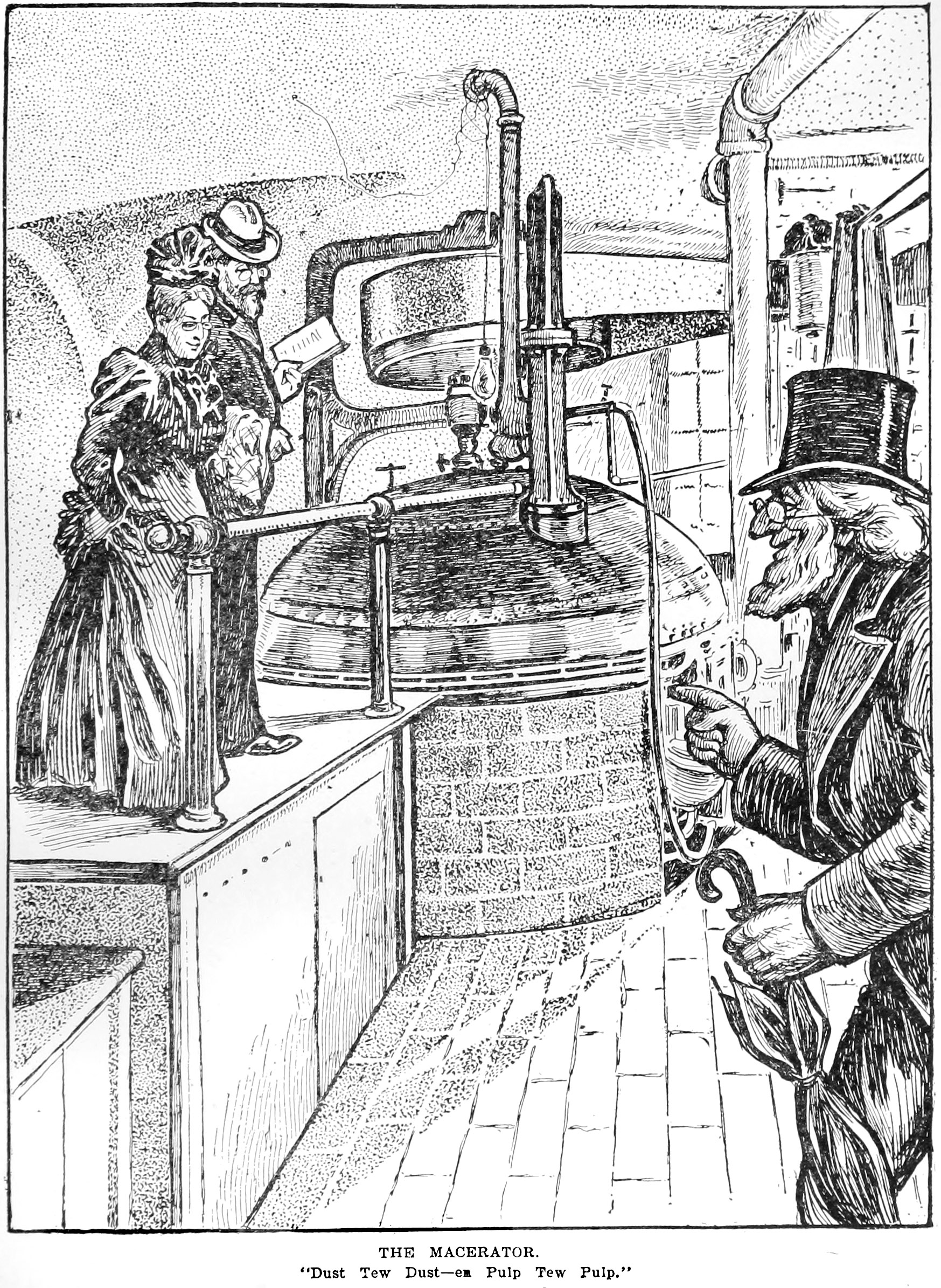Around the Capital with Uncle Hank
by Thomas Fleming, 1902
The Macerator
 The Macerator
The Macerator“Dust Tew Dust—en Pulp Tew Pulp”
The macerator was the next thing to attract attention, to the room containing which the party was now conducted by the guide. This machine for the destruction of mutilated currency consists of a huge spherical receptacle of steel, containing water and fitted interiorly with one hundred and fifty-six keen edged knives, which as they revolve cut the enclosed notes into exceedingly minute particles. The lid is securely fastened with strong locks, each with an individual key, one of which is held by the Secretary, one by the Treasurer, and the third by the Controller of the Currency. Every day at one o'clock deputies of these officials with a fourth one appointed by the Secretary to represent the banks and the people meet at the macerator to deposit the money to be destroyed. Each lock is opened by its respective key-holder, the cover is raised and the various packages of currency are thrust in. The cover is then securely fastened down and as the multitude of knives revolve the work of destruction begins. When this is finally accomplished the committee unlocks a valve, the liquid pulp flows out, is then screened into a pit below and transferred to the Bureau of Engraving and Printing to be rolled out into sheets. This is afterward sold for forty dollars per ton.
The capacity of the macerator is over one ton of pulp, but it is rarely put to this test; the largest amount ever destroyed at one operation was in 1894, when one hundred and fifty-one million dollars was rendered into pulp. The colored guide described, in his sing-song dialect, a few of the foregoing facts concerning the macerator, and when he had concluded Uncle Hank remarked: “Et's a verificashun ov th' scriptchurl enjunctshun —‘Dust tew dust’ –pulp tew pulp– don't ye see?”
The Macerator, Around the Capital with Uncle Hank by Thomas Fleming, 1902, pp. 240-242.